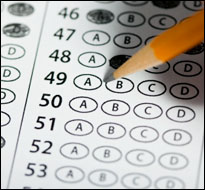
Despite U.S. education initiatives such as No Child Left Behind (2003) and Race to the Top (2009), a 2011 report found only modest gains in reading and math scores in the past decade. While the outcomes of these assessments can be problematic, in an age of increasing global competitiveness — and billions of federal dollars spent on education — tests can help policymakers to better understand how well these current policies are working.
A 2012 report from the Harvard Kennedy School, “Achievement Growth: International and U.S. State Trends in Student Performance,” estimated learning gains in math, science and reading for the United States and 48 developed and transitional countries from 1995 to 2009; the researchers also analyzed student performance in 41 U.S. states between 1992 and 2011. The test scores examined were for students in the 4th and 8th grades, or their approximate international equivalent.
The study findings include:
- U.S. students have experienced only modest educational gains since 1995. Test score performance improved annually by 1.6% of a standard deviation — about “one additional year’s worth of learning.” Per-capita spending was found to have no effect on testing outcomes.
- The United States ranks 24th of 49 countries — in the middle of the pack — for test score improvement overall.
- The three top-performing countries, Latvia, Chile and Brazil, showed annual growth of the equivalent of more than two additional years of schooling. The three worst-performing countries, Sweden, Bulgaria and Thailand, showed test-score declines. The authors observed “no significant pattern between original performance and changes in performance across countries.”
- U.S. states adhered to the “catch-up” theory that lower-performing ones caught up to better-performing ones. Additionally, the majority of states that registered gains over the time period did so for both low- and high-achieving students.
- Individual U.S. states varied widely in educational gains. Maryland, Florida and Delaware showed the largest gains, equivalent to at least two years of additional learning; Iowa, Maine, Oklahoma, Wisconsin and Nebraska showed the lowest gains, equivalent only to about one-half to three-quarters of a year’s worth of learning.
- U.S. student performance steadily declined after the 4th grade and continued throughout high school.
The authors suggested that “the failure of the United States to close the international test-score gap, despite assiduous public assertions that every effort would be undertaken to produce that objective, raises questions about the nation’s overall reform strategy. Education goal setting in the United States has often been utopian rather than realistic.”
Tags: metastudy, municipal, youth
